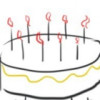起因underscore 源码版本 1.8.2
很多人向我推荐研究js,可以看看一些第三方js类库的源码,而源码之中最好解读也最简短的就是underscore,它也是我平常比较喜欢的一个库,因为它性价比高:体积小、能力强。打开一看,才1000多行,试着读了一下,确实很值得一看,所以对精彩部分做了一下整理。
闭包整个函数在一个闭包中,避免污染全局变量。通过传入this(其实就是window对象)来改变函数的作用域。和jquery的自执行函数其实是异曲同工之妙。这种传入全局变量的方式一方面有利于代码阅读,另一方面方便压缩。
underscore写法:
(function(){
...
}.call(this));jquery写法:
(function(window, undefined) {
...
})(window);18 var ArrayProto = Array.prototype, ObjProto = Object.prototype, FuncProto = Function.prototype;Array,Object,Function这些本质都是函数,获取函数原型属性prototype也是为了便于压缩。简单解释一下,如果代码中要扩展属性,可能这样写
Object.prototype.xxx = ...而这种代码是不可压缩的,Object,prototype这些名字改了浏览器就不认得了。
但是上面的代码中创建了ObjProto之后,源生代码经过压缩之后,ObjProto就可能命名成a变量,那么原来的代码就压缩成
a.xxx = ...一个小建议就是凡事一段代码被使用两次以上都建议定义变量(函数),有利于修改和压缩代码。
格式29 var
nativeIsArray = Array.isArray,
nativeKeys = Object.keys,
nativeBind = FuncProto.bind,
nativeCreate = Object.create;这种定义的方式省略了多余的var,格式也美观,让我想到了sublime中的一个插件alignment。
1194 _.isElement = function(obj) {
return !!(obj && obj.nodeType === 1);
};判断是否为dom,dom的nodeType属性值为1。这里用!!强转为boolean值
1200 _.isArray = nativeIsArray || function(obj) {
return toString.call(obj) === '[object Array]';
};判断是否为数组。由于Array.isArray函数是ECMAScript 5新增函数,所以为了兼容之前的版本,在原生判断函数不存在的情况下,后面重写了一个判断函数。用call函数来改变作用域可以避免当obj没有toString函数报错的情况。
1205 _.isObject = function(obj) {
var type = typeof obj;
return type === 'function' || type === 'object' && !!obj;
};判断是否为对象。先用typeof判断数据类型。函数也属于对象,但是由于typeof null也是object,所以用!!obj来区分这种情况。
1219 if (!_.isArguments(arguments)) {
_.isArguments = function(obj) {
return _.has(obj, 'callee');
};
}判断是否为arguments,很简单,arguments有个特有属性callee。
1239 _.isNaN = function(obj) {
return _.isNumber(obj) && obj !== +obj;
};NaN这个值有两个特点:1.它是一个数;2.不等于它自己。
‘+’放在变量前面一般作用是把后面的变量变成一个数,在这里已经判断为一个数仍加上’+’,是为了把var num = new Number()这种没有值的数字也归为NaN。
1244 _.isBoolean = function(obj) {
return obj === true || obj === false || toString.call(obj) === '[object Boolean]';
};是不是以为如果是布尔值不是true就是false?还有第3中情况var b = new Boolean()。b也是布尔值。
1254 _.isUndefined = function(obj) {
return obj === void 0;
};用void 0来表示undefined,非常有意思的小技巧。不过常用方式还是if(xxx)来判断是不是undefined。
eq是underscore的一个内置函数,代码太长,不粘贴了。isEmpty调用了这个函数。整个思路由易到难,先用===比较简单数据,然后用toString来判断是否相等,最后用递归处理复杂的Array、Function和Object对象。
1091 if (a === b) return a !== 0 || 1 / a === 1 / b;这里为了区分’+0’和’-0’,因为这两个数对计算结果是有影响的。
1098 var className = toString.call(a);
if (className !== toString.call(b)) return false;
switch (className) {
// Strings, numbers, regular expressions, dates, and booleans are compared by value.
case '[object RegExp]':
// RegExps are coerced to strings for comparison (Note: '' + /a/i === '/a/i')
case '[object String]':
// Primitives and their corresponding object wrappers are equivalent; thus, `"5"` is
// equivalent to `new String("5")`.
return '' + a === '' + b;
case '[object Number]':
// `NaN`s are equivalent, but non-reflexive.
// Object(NaN) is equivalent to NaN
if (+a !== +a) return +b !== +b;
// An `egal` comparison is performed for other numeric values.
return +a === 0 ? 1 / +a === 1 / b : +a === +b;
case '[object Date]':
case '[object Boolean]':
// Coerce dates and booleans to numeric primitive values. Dates are compared by their
// millisecond representations. Note that invalid dates with millisecond representations
// of `NaN` are not equivalent.
return +a === +b;
}这里是对简单对象进行判断,分为两类,一类是String和RegExp,这种数据直接toString然后判断。另一类是Number、Date和Boolean,通过转换成数字判断。
1150 aStack.push(a);
bStack.push(b);
if (areArrays) {
length = a.length;
if (length !== b.length) return false;
while (length--) {
if (!eq(a[length], b[length], aStack, bStack)) return false;
}
} else {
var keys = _.keys(a), key;
length = keys.length;
if (_.keys(b).length !== length) return false;
while (length--) {
key = keys[length];
if (!(_.has(b, key) && eq(a[key], b[key], aStack, bStack))) return false;
}
}
aStack.pop();
bStack.pop();对于数组和对象只能用递归了,同时用aStack和bStack来暂存递归中的子对象。这里一个小技巧的就是先判断数组/属性的长度,如果不相等可以有效地减少递归。
作者:亚里士朱德
原文地址:http://yalishizhude.github.io











 随时随地看视频
随时随地看视频




